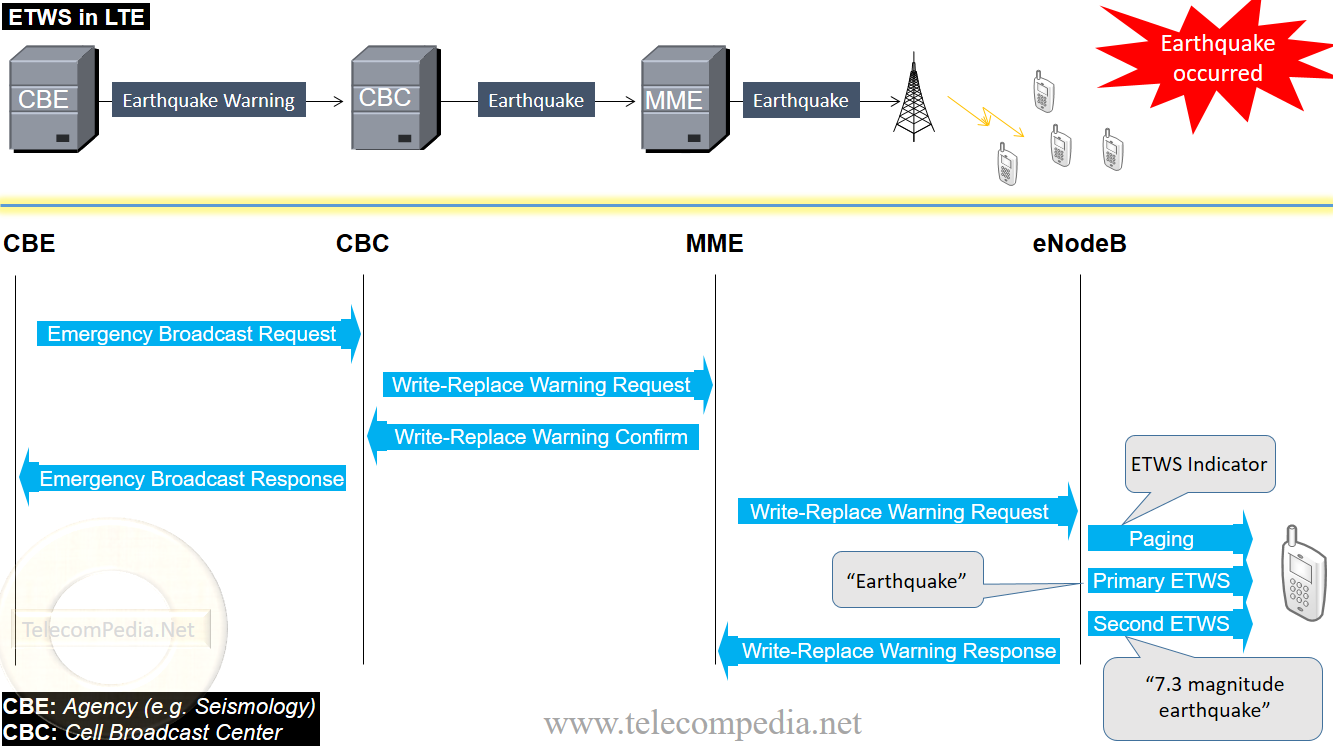Wireless communication systems should have a rapid solution to inform the people about natural disasters such as earthquake, tsunami or landslide. Currently one of the best notification solutions is ETWS for mobile users who are receiving pop-up messages on their phones’ screens. It is 3GPP specification. ETWS stands for “Earthquake and Tsunami Warning System”. The warning notification usually comes from local governments to mobile operators, and this messenger is called as CME (Cell Broadcast Entity). CME is not 3GPP specification and might be Seismology Agency or other broadcasting source.
CME can broadcast two kinds of notifications, Primary and Secondary.:
The primary message should be delivered to the subscribers within 4 seconds after generation of Cell Broadcast Entity and this is short message consists of urgent events such as “Earthquake”, “Tsunami” or “Earthquake + Tsunami”.
The secondary message may contain of some supplementary information such as epicenter, seismic intensity, magnitude and so on.
ETWS is available for GSM, WCDMA, LTE and 5G technologies
The cell broadcast service is mainly used to notify the subscribers about the disasters in GSM and WCDMA. Following radio channels are used for broadcasting:
CBCH: Cell Broadcast Channel in GSM
CTCH: Common Traffic Channel in WCDMA
In LTE, the subscribers are notified with system information messages:
“SystemInformationBlockType10” : carries Primary Notification message for ETWS
“SystemInformationBlockType11” : carries Secondary Notification message for ETWS
Overall primitive procedure for all technologies:
1. Cell Broadcast Entity notifies Cell Broadcast Centre about warning.
2. Cell Broadcast Centre forwards warning message to BSC, RNC or MME.
3. The warning message comes to BTS/NodeB/eNodeB through BSC/RNC/MME .
4. BTS, NodeB and eNodeB notifies the UEs with paging messages which will invoke user equipments to start receiving broadcasting information about warning.
